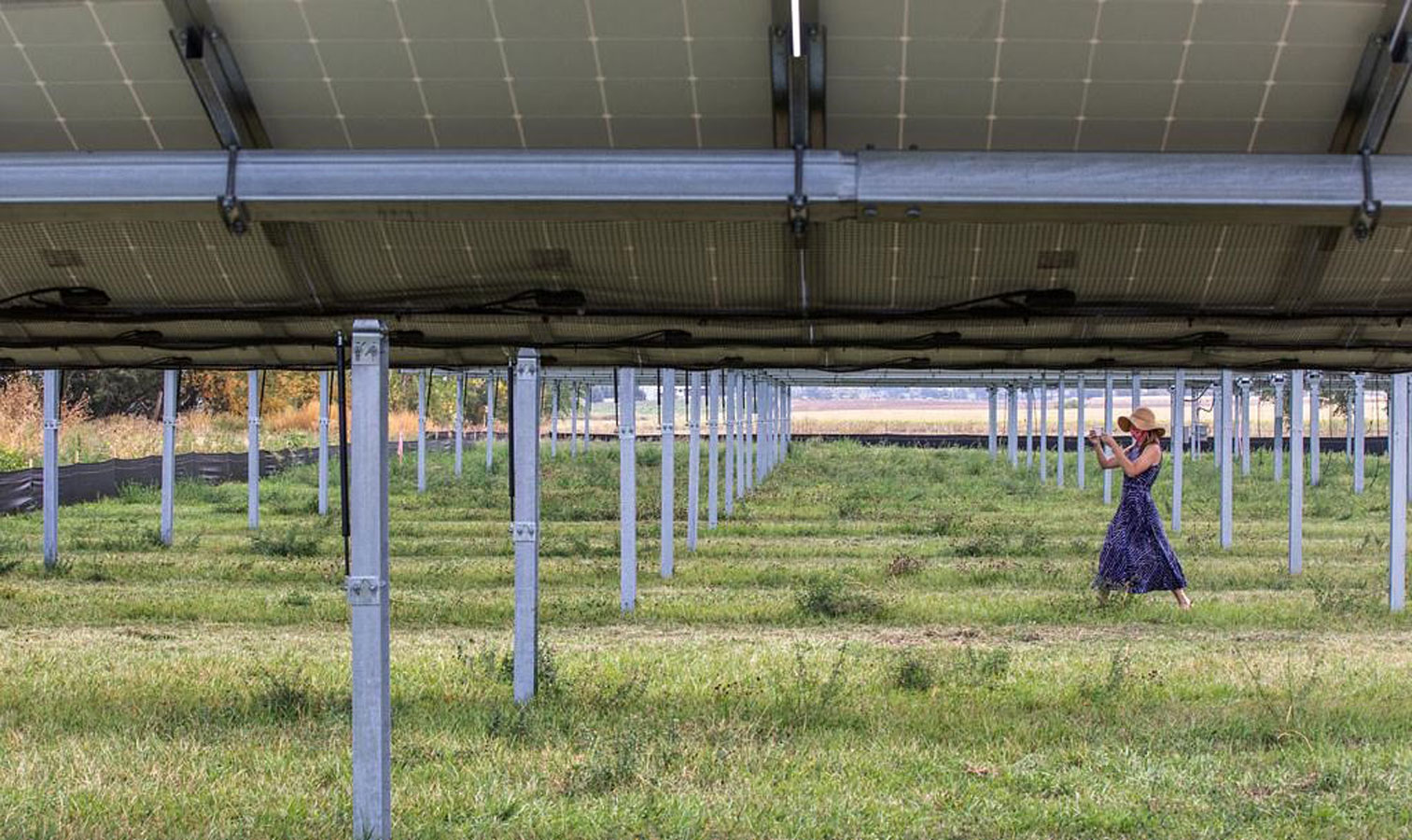A farmer’s land is used to grow food—period. Once seeds are in the ground, roots take hold, and shoots emerge, that piece of real estate is spoken for until harvest time. At least, that’s the way it usually works. But what if you could find another use for that same land, simultaneously growing crops while finding other ways to make money from that same acreage or plot? A nascent but rising “agrivoltaics” movement proposes to do just this.
In agrivoltaics, solar panels are installed high above crops, sometimes high enough for farm machinery to operate underneath. Farmers who can’t afford the capital cost can collect rent from a third party that owns the panels. Some shading is inevitable, but some crops actually grow better in partial shade.
Soak up the sun
One study says the agrivoltaics concept was first dreamt up in Germany in the 1980s, but the first fully operational system was reportedly built in Japan in 2004 ( https://www.mdpi.com/2071-1050/13/12/6871 ). A Japanese engineer wanted to see what would happen if he installed solar photovoltaic panels on a sort of garden terrace structure, situating the PV panels high above rows of plants below. The height and spacing of the PV array were optimized to ensure crops would still receive enough sunlight.
“Most agrivoltaics projects are on a demonstrative scale, generally less than one hectare.”
“At this stage, most agrivoltaics projects are on a demonstrative scale, generally less than one hectare,” Carlos Toledo, a researcher at the Italian energy and technology research institute ENEA, told Grow Further. “Once the PV solution demonstrates that it fits with the agricultural labor in terms of yield, quality of the product, etc., some ideas are reaching commercial scale.”
In a 2021 paper ENEA published in the journal Sustainability, its researchers propose using the solar panels to capture and store rainwater, as well, making agrivoltaic technology a way of tying food, water, and energy together. ENEA predicts this innovation in agriculture and energy is about to take off. “It is in fact a significant potential contribution to meet climate challenges touching on food, energy, agriculture, and rural policies,” the report’s authors wrote. “A sharp increase is expected in terms of number of installations and capacity in the near future.”
Reaching the smallholders
The vast majority of agrivoltaic systems today are found in developed nations like Japan, with 3000 systems, or Spain. But experts say the concept could be a game changer for smallholder farmers in the developing world. Agrivoltaic systems are typically connected to power grids, but off-grid applications might create the most value for smallholders, at least those who are able to finance batteries.
Last year, a team of scholars set out to explore the feasibility of agrivoltaics for smallholders in Niger. The agrivoltaic systems they propose would power irrigation for Niger’s farms, replacing diesel-powered pumps and stimulating the economy by generating surplus electricity. “Implementation of [agrivoltaics] could significantly increase the economic activities in the village, mainly in the field of small agricultural enterprises,” that team concluded in the journal Agronomy. “Such a system seems to be an appropriate option to supply food and energy in the village” (https://www.mdpi.com/2073-4395/11/10/1906).
Adapting agrivoltaic systems to tropical smallholder production systems is the sort of emerging research area that excites us at Grow Further.
“A sharp increase is expected in terms of number of installations and capacity.”
— Grow Further
Photo credit: A “solar garden” installation in Longmont, Colorado, one of several new agrivoltaic experiments by the Joint Institute for Strategic Energy Analysis. Werner Slocum, National Renewable Energy Laboratory.




